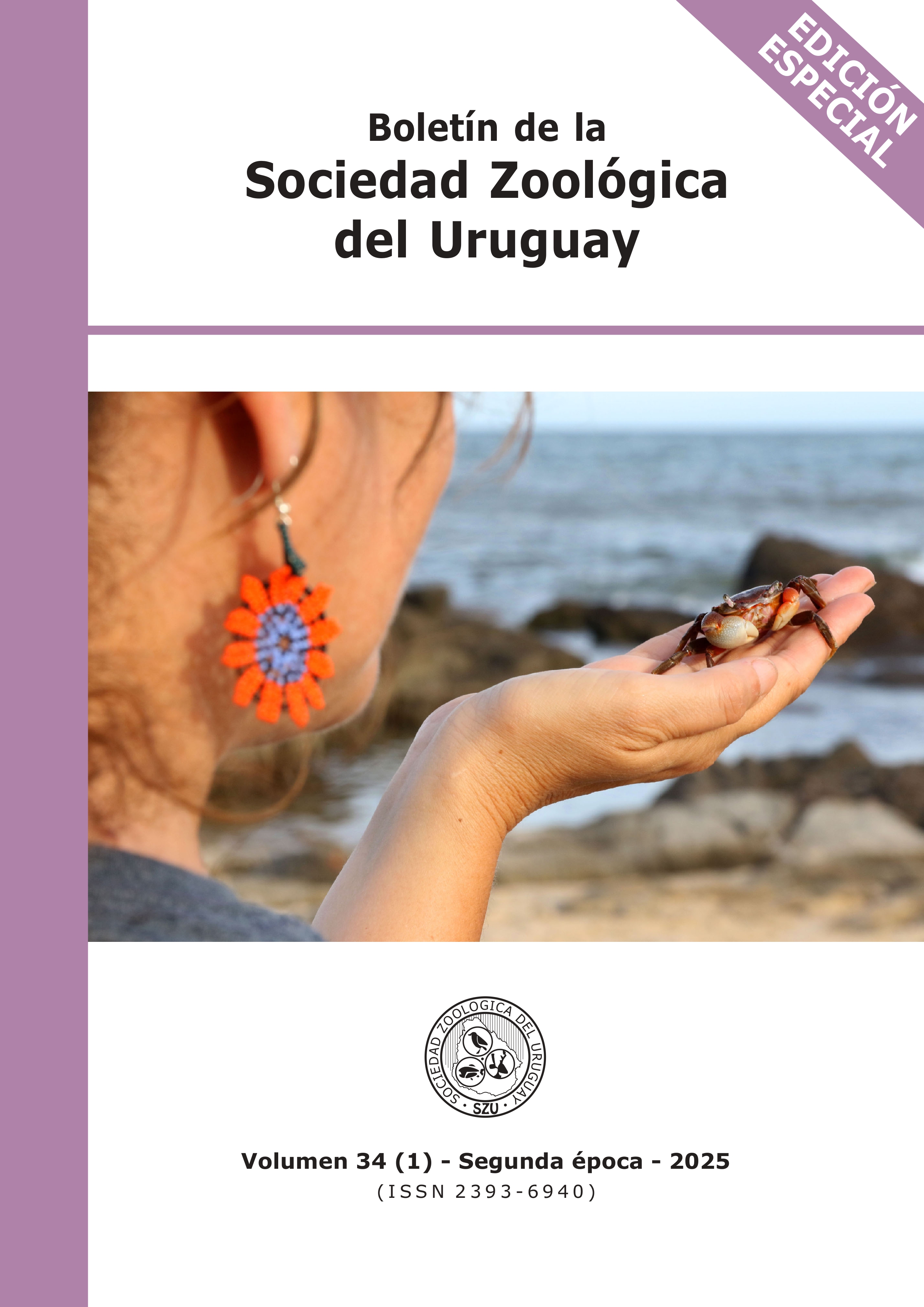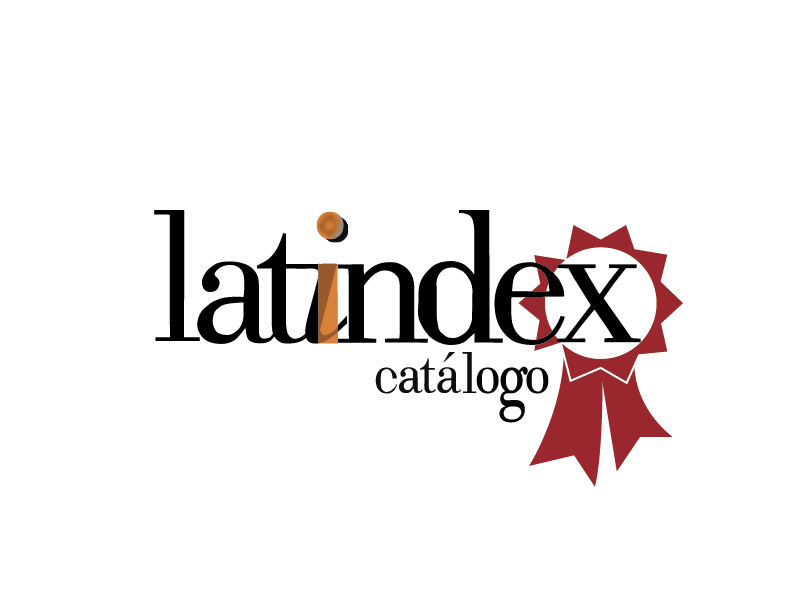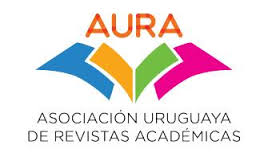ASSESSMENT AND DESIGN OF ENCLOSURES FOCUSED ON ANIMAL WELFARE: A CASE STUDY ON Leopardus geoffroyi
DOI:
https://doi.org/10.26462/34.1.17Keywords:
behavioral budget, enclosure design, ethogram, space useAbstract
The proper design of enclosures for wild animals is essential to promote the expression of their behavioral needs, providing opportunities for choice and control over their environment, thereby enhancing their quality of life. This study aimed to assess and propose improvements to the enclosure design of a Leopardus geoffroyi specimen in captivity to promote its welfare. Direct observations were conducted using ad libitum sampling to create the ethogram and focal sampling to obtain the behavioral budget. Additionally, space use was analyzed with the modified Spread of Participation Index, and enclosure quality was assessed using the environmental indicators of the Ackonc-AWA protocol. The results showed low levels of locomotion and exploration, with a preference for the upper part of the enclosure, suggesting structural limitations. The environmental evaluation revealed major deficiencies in 79% of the indicators and minor deficiencies in 14%. The combined use of these methodologies allowed us to identify key problems and propose an enclosure design, both external (exhibition) and internal (management), adapted to the needs of the animal. It is recommended to continue assessing the impact of these changes to ensure improvements in welfare. This methodology could be applied to other species under human care.
Downloads
References
Albanesi, S.A., Jayat, J.P., & Brown, A.D. (2016). Patrones de actividad de mamíferos de medio y gran porte en el pedemonte de yungas del noroeste argentino. Mastozoología Neotropical, 23 (2), 335-358. https://www.scielo.org.ar/scielo.php?pid=S0327-93832016000200011&script=sci_arttext
Association of Zoos & Aquariums (AZA) Jaguar Species Survival Plan (2016). Jaguar Care Manual. Association of Zoos and Aquariums, Silver Spring, MD. Recuperado el 3 de agosto de 2024 de https://assets.speakcdn.com/assets/2332/jaguar_care_manual_2016.pdf
Association of Zoos & Aquariums (AZA) Lion Species Survival Plan (2012). Lion Care Manual. Association of Zoos and Aquariums, Silver Spring, MD. Recuperado el 3 de agosto de 2024 de https://assets.speakcdn.com/assets/2332/lion_care_manual_20121.pdf
Bashaw, M.J., Bloomsmith, M.A., Marr, M.J., & Maple, T.L. (2003). To hunt or not to hunt? A feedingenrichment program for captive large felids. Zoo Biology, 22(2), 189-198. https://doi.org/10.1002/zoo.10065
Biolatti, C., Modesto, P., Dezzutto, D., Pera, F., Tarantola, M., Gennero, M.S., ... & Acutis, P.L. (2016). Behavioural analysis of captive tigers (Panthera tigris): A water pool makes the difference. Applied Animal Behaviour Science, 174, 173-180. https://doi.org/10.1016/j.applanim.2015.11.017
Bisceglia, S.B., Pereira, J.A., Teta, P., & de Villafañe, G. (2008). Food habits of Geoffroy's cat (Leopardus geoffroyi) in agroecosystem habitats of Buenos Aires, Argentina. Mammalian Biology, 73(2), 85-92. https://www.scielo.org.ar/scielo.php?pid=S1667-782X2016000100005&script=sci_arttext
Bradshaw, J., & Cameron-Beaumont, C. (2000). The signalling repertoire of the domestic cat and its undomesticated relatives. En D.C. Turner y P. Bateson (Eds.), The Domestic Cat: The Biology of its Behaviour (2ª ed., pp. 67-93). Cambridge University Press.
Brando, S., & Coe, J. (2022). Confronting back-ofhouse traditions: Primates as a case study. J. Zool. Bot. Gard., 3, 366-397. https://doi.org/10.3390/jzbg3030029
Broom, D.M. 2022. Animal welfare concepts. En Routledge Handbook of Animal Welfare, A. Knight, C. Phillips and P. Sparks, eds, 12-21. Routledge: London and New York. ISBN 978-1-032-02206-2.
Brown, S., Atkins, C., Bagley, R., Carr, A., Cowgill, L., Davidson, … & Gómez Suarez, Á.M. (2015). Evaluación de un programa de condicionamiento operante con refuerzo positivo en un grupo de felinos (Panthera tigris) del parque zoológico Matecaña - Pereira - Colombia [Trabajo de grado, Universidad Tecnológica de Pereira]. Universidad Tecnológica de Pereira.
Camacho Giraldo, S., & Gómez Suárez, Á.M. (2015). Evaluación de un programa de condicionamiento operante con refuerzo positivo en un grupo de felinos (Panthera tigris) del parque zoológico Matecaña-Pereira-Colombia, 61. https://hdl.handle.net/11059/5659
Carlstead, Kathy J. (1998). Determining the causes of stereotypic behaviors in zoo carnivores: toward appropriate enrichment strategies. En Second nature: environmental enrichment for captive animals. Shepherdson, D.J., Mellen, Jill D., and Hutchins, M., editors. 172-183. Washington, DC: Smithsonian Institution Press.
Carlstead, K., Brown, J.L., & Seidensticker, J. (1993). Behavioral and adrenocortical responses to environmental changes in leopard cats (Felis bengalensis). Zoo Biology, 12(4), 321-331. https://doi.org/10.1002/zoo.1430120408
Clubb, R., & Mason, G.J. (2007). Natural behavioural biology as a risk factor in carnivore welfare: How analysing species differences could help zoos improve enclosures. Applied Animal Behaviour Science, 102(3-4), 303-328. https://doi.org/10.1016/j.applanim.2006.05.033
Coe, J.C. (2014). Next generation rotation exhibits, raceway networks and space to explore. En Proceedings of the ZAA Annual Conference Proceedings, Auckland, New Zeland (pp. 25-28).
Corte Cortazzo, S. (2007). Comportamiento maternofilial en el babuino de desierto Papio hamadryas (Primates, Cercopithecidae): estudio de un grupo en cautiverio. Montevideo: Tesis de Maestría PEDECIBA, Universidad de la República. Facultad de Ciencias. Recuperado el 20 de octubre del 2022 de https://www.researchgate.net/publication/323858539_Estudios_de_comportamiento_maternal_en_babuinos_Papio_-hamadryas_hamadryas_residentes_en_el_-zoologico_del_Parque_Lecocq_Montevideo_ Uruguay_La_primatologia_en_Latinoamerica_2_-_A_primatologia_na_America
Cuellar, E., Maffei, L., Arispe, R., & Noss, A. (2006). Geoffroy's cats at the northern limit of their range: Activity patterns and density estimates from camera trapping in Bolivian dry forests. Studies on Neotropical Fauna and Environment, 41, 169-177. https://doi.org/10.1080/01650520600840001
De Azevedo, C.S., Cipreste, C.F., Pizzutto, C.S., & Young, R.J. (2023). Review of the effects of enclosure complexity and design on the behaviour and physiology of zoo animals. Animals, 13(8), 1277. https://doi.org/10.3390/ani13081277
Dumont, A., Kaiser, M., & Guzmán Marín, B.C. (2022). Comportamiento de dos felinos silvestres hacia el agua: casos Leopardus geoffroyi (Carnivora: Felidae) y Leopardus braccatus (Carnivora: Felidae). Acta Zoológica Lilloana, 66(2), 205-218. https://doi.org/10.30550/j.azl/2022.66.2/2022-10-18
Dyson, S. (2022). The ridden horse pain ethogram. Equine Veterinary Education, 34(7), 372-380. https://doi.org/10.1111/eve.13468
Fernandez, E.J., Brereton, J.E., & Coe, J. (2023). How do we plan for the zoo exhibit of the future?. Applied Animal Behaviour Science, 268, 106085. https://doi.org/10.1016/j.applanim.2023.106085
Finch, K., Waterman, J.O., Cowl, V.B., Marshall, A., Underwood, L., Williams, L.J., … & Holmes, L. (2022). Island Life: Use of Activity Budgets and Visibility to Evaluate a Multi-Species Within-Zoo Exhibit Move. Animals, 12(16), 2123. https://doi.org/10.3390/ani12162123
Ghimire, R., Brown, J.L., Thitaram, C., & Bansiddhi, P. (2024). Comparison of animal welfare assessment tools and methodologies: need for an effective approach for captive elephants in Asia. Frontiers in Veterinary Science, 11, 1370909. https://doi.org/10.3389/fvets.2024.1370909
Global Federation of Animal Sanctuaries (GFAS). (2019). Standards For Felid Sanctuaries. Recuperado el 3 de agosto de 2024 de https://sanctuaryfederation.org/wp-content/uploads/2020/02/FelidStandards-Dec-2019.pdf
González, E.M., & Martínez-Lanfranco, J.A. (2010). Mamíferos del Uruguay. En Guía de campo e introducción a su estudio y conservación (pp. 190-191). Montevideo, Uruguay: Banda Oriental, Vida Silvestre & MNHN. Recuperado el 3 de agosto de 2024 de https://www.scielo.org.ar/pdf/mznt/v18n2/v18n2a15.pdf
González-Barboza, M., Hilario, M., Zorzi, M., y Corte, S. (2017). Evaluación del Bienestar Animal de los felinos en la Estación de Cría de Fauna Autóctona Cerro Pan De Azúcar (ECFA). Programa de Apoyo a la Investigación Estudiantil (PAIE), Comisión Sectorial de Investigación Científica (CSIC). Recuperado el 20 de octubre del 2022 de https://www.estudiantes.csic.edu.uy/2020/02/06/evaluacion-del-bienestaranimal-de-los-felinos-en-la-estacion-de-criade-fauna-autoctona-cerro-pan-de-azucar-ecfa/
Hancocks, D. (2010). Exhibitry. En D.G. Kleiman, K.V. Thompson, y C.K. Baer (Eds.), Wild Mammals in Captivity: Principles and Techniques (pp. 121-131). University of Chicago Press.
Hedeen, S.E. (1982). Utilization of space by captive groups of lowland gorillas (Gorilla g. gorilla).
Ohio Journal of Science, 82, 27-30.
Hunter, L. (2015). Geoffroyi's Cat. En Wild Cats of the World (pp. 91-95). Londres, Reino Unido: Bloomsbury Publishing.
Johnson, W.E., & Franklin, W.L. (1991). Feeding and spatial ecology of Felis geoffroyi in southern Patagonia. Journal of Mammalogy, 72(4), 815-820. https://doi.org/10.2307/1381848
Lahitte, H.B., Ferrari, R., & Lázaro, L. (2005). Teoría y Práctica de la descripción en Ciencias del comportamiento. Etogramática. La Plata: Nobuko.
Lauria, R. (2023). Diseño de recintos para fauna silvestre bajo cuidado humano: Directrices y expectativas relacionadas al bienestar animal. El caso de Leopardus geoffroyi (Carnivora, Felidae) en la Estación de cría de fauna autóctona Cerro Pan de Azúcar. Noticias de la Sociedad Zoológica del Uruguay. Año 16 - Nr. 60 junio. https://szu.org.uy/assets/noticias/noticias_szu_16_60.pdf
Leyhausen, P. (1988). The tame and the wild – another just so story? En D.C. Turner y P. Bateson (Eds.), The Domestic Cat: The Biology of Its Behaviour (pp. 57-66). Cambridge University Press.
Lindburg, D.G. (1988). Improving the feeding of captive felines through application of field data. Zoo Biology, 7(3), 211-218. https://doi.org/10.1002/zoo.1430070303
Manfredi, C., Lucherini, M., Soler, L., Baglioni, J., Vidal, E.L., & Casanave, E.B. (2011). Activity and movement patterns of Geoffroy's cat in the grasslands of Argentina. Mammalian Biology, 76(3), 313-319. https://doi.org/10.1016/j.mambio.2011.01.009
Manfredi, C., Luengos Vidal, E., Castillo, D.F., Lucherini, M., & Casanave, E.B. (2012). Home range size and habitat selection of Geoffroy's cat (Leopardus geoffroyi, Felidae, Carnivora) in the pampas grassland. Mammalia, 76(1), 105-108. https://doi.org/10.1515/mammalia-2011-0039
Manfredi, C., Soler, L., Lucherini, M., & Casanave, E.B. (2006). Home range and habitat use by Geoffroy's cat (Oncifelis geoffroyi) in a wet grassland in Argentina. Journal of zoology, 268(4), 381-387. https://doi.org/10.1111/j.1469-7998.2005.00033.x
Martin, P., & Bateson, P. (1993). Measuring behaviour: An introductory guide (2nd ed., cap. 3, pp. 45- 78). Cambridge University Press.
Mason, G.J., Burn, C.C., Dallaire, J.A., Kroshko, J., Kinkaid, H.M., & Jeschke, J.M. (2013). Plastic animals in cages: Behavioural flexibility and responses to captivity. Animal Behaviour, 85(5), 1113-1126. https://doi.org/10.1016/j.anbehav.2013.02.002
Mason, G. (2008). Stereotypic Behaviour in Captive Animals: Fundamentals and Implications for Welfare and Beyond. En Mason, G., Rushen, J. (Eds.), Stereotypic animal behaviour: fundamentals and applications to welfare. CAB International.
Mason, G.J., Clubb, R., & Latham, N. (2008). Environmental enrichment: The case for naturalistic environments and the benefits of complexity. En G.J. Mason y J. Rushen (Eds.), Stereotypic Animal Behaviour: Fundamentals and Applications to Welfare (2nd ed., pp. 153- 189). CAB International.
Mellen, J.D. (1997). Minimum Husbandry Guidelines for Mammals: Small Felids. American Association of Zoos and Aquariums.
Mellor, D.J., Beausoleil, N.J., Littlewood, K.E., McLean, A.N., McGreevy, P.D., Jones, B., & Wilkins, C. (2020). The 2020 five domains model: Including human–animal interactions in assessments of animal welfare. Animals, 10(10), 1870. https://doi.org/10.3390/ani10101870
Mellor, D.J., Hunt, S., & Gusset, M. (eds). (2015a). Enriquecimiento ambiental. En Cuidando la fauna silvestre: La Estrategia Mundial de Zoológicos y Acuarios para el Bienestar Animal (pp. 34-39). Gland: Oficina Ejecutiva de WAZA. Recuperado el 27 de noviembre del 2024 de https://www.waza.org/wp-content/uploads/2019/03/WAZA-Animal-Welfare-Strategy-2015_Spanish.pdf
Mellor, D.J., Hunt, S., & Gusset, M. (eds). 2015b. Diseño de exhibidores. En Cuidando la fauna silvestre: La Estrategia Mundial de Zoológicos y Acuarios para el Bienestar Animal (pp. 40-45). Gland: Oficina Ejecutiva de WAZA. Recuperado el 27 de noviembre del 2024 de https://www.waza.org/wp-content/uploads/2019/03/WAZA-Animal-Welfare-Strategy-2015_Spanish.pdf
Miller, L.J., Vicino, G.A., Sheftel, J., & Lauderdale, L.K. (2020). Behavioral diversity as a potential indicator of positive animal welfare. Animals, 10(7), 1211. https://doi.org/10.3390/ani10071211
Montevideo Portal. (2024). Se busca: un puma escapó anoche de una reserva en Maldonado (CAPTURADO). Montevideo Portal. Recuperado el 27 de noviembre del 2024 de https://www.montevideo.com.uy
Morato, R.G., de Souza Lima, F., Thompson, R., Carrillo-Percastegui, S.E., & Salvador, C.H. (2011). Activity patterns of the Geoffroy's cat (Leopardus geoffroyi) in the central Brazilian savannas. Acta Theriologica, 56(2), 177-182. https://doi.org/10.1007/s13364-011-0023-7
Morgan, K.N., & Tromborg, C.T. (2007). Sources of stress in captivity. Applied Animal Behaviour Science, 102(3-4), 262-302. https://doi.org/10.1016/j.applanim.2006.05.032
OpenAI. (2024). ChatGPT (versión del 10 de diciembre) [Modelo de lenguaje de gran tamaño]. https://chat.openai.com/chat
Plowman A.B. (2003). A note on a modification of the spread of participation index allowing for unequal zones. Applied Animal Behaviour Science 83(4), 331-336. https://doi.org/10.1016/S0168-1591(03)00142-4
Racciatti, D.S., Feld, A., Rial, L.A., Blanco, C., & Tallo-Parra, O. (2022). Ackonc-AWA: A multi-species animal welfare assessment protocol for wild animals under human care to overcome the use of generic welfare checklists. Frontiers in Veterinary Science, 9, 1033821. https://doi.org/10.3389/fvets.2022.1033821
Racciatti, D.S., Rial, L.A., & Feld, A. (2023). Ackonc- AWA Manual de Uso. Recuperado el 3 de agosto de 2024 de https://archive.org/details/ackonc-awa-manual-de-uso-2023
Rea, M.S., Figueiro, M.G., Bierman, A., & Bullough, J.D. (2010). Circadian light. Journal of circadian rhythms, 8(1), 2. https://link.springer.com/ article/10.1186/1740-3391-8-2
Resende, L.S., Remy, G.L., Ramos Jr, V.D.A., & Andriolo, A. (2009). The influence of feeding enrichment on the behavior of small felids (Carnivora: Felidae) in captivity. Zoologia (Curitiba), 26, 601-605. https://doi.org/10.1590/S1984-46702009000400003
Rodríguez-Guerra, M., & Guillén-Salazar, F. (2007). El concepto de parque zoológico. En El parque zoológico: un nuevo aliado de la biodiversidad: guía para la aplicación de la Ley 31/2003 de conservación de la fauna silvestre en los parques zoológicos. (pp. 39-49). Fundación Biodiversidad. Recuperado el 20 de octubre del 2022 de https://www.miteco.gob.es/content/dam/miteco/es/biodiversidad/temas/recursosgeneticos/doc_guia_aplcacion_ley_31_2003_zoos_tcm30-198878.pdf
Rodríguez Lucchese, E.V., & Rohrer Meneses, M.V. (2014). Relevamiento de mamíferos presentes en zoológicos del Uruguay. Tesina de grado. Facultad de Veterinaria, UDELAR, Uruguay. Recuperado el 3 de agosto de 2024 de https://www.colibri.udelar.edu.uy/jspui/handle/20.500.12008/10461
Rose, P.E., & Riley, L.M. (2019). The use of Qualitative Behavioural Assessment in zoo welfare measurement and animal husbandry change. Journal of Zoo and Aquarium Research, 7(4), 150-161. https://doi.org/10.19227/jzar.v7i4.423
Ross, S.R., Schapiro, S.J., Hau, J., & Lukas, K.E. (2009). Space use as an indicator of enclosure appropriateness: A novel measure of captive animal welfare. Applied Animal Behaviour Science, 121(1), 42-50. https://doi.org/10.1016/j.applanim.2009.08.007
Sanderson, J.G., & Watson, P. (2011). How do small cats survive the winter?. En Small wild cats: The animal answer guide. JHU Press.
Scheifler, N.A., Álvarez, M.C., Rafuse, D.J., Kaufmann, C.A., Massigoge, A., González, M.E., & Gutiérrez, M.A. (2020). Taphonomic signature of Geoffroy's cat (Leopardus geoffroyi) on small sized preys: A comparative study of ingested and non-ingested leporid bones. Journal of Archaeological Science: Reports, 31, 102340. https://doi.org/10.1016/j.jasrep.2020.102340
Schmal, C., Herzel, H., & Myung, J. (2020). Clocks in the wild: entrainment to natural light. Frontiers in
physiology, 11, 272. https://doi.org/10.3389/fphys.2020.00272
Seidensticker, J. & Doherty, J.G. (1996) Integrating animal behavior and exhibit design. 1996. En Wild Mammals in Captivity; Kleinman, D.G., Thompson, K.V., Kirk Baer, C., Eds.; University of Chicago Press: Chicago, IL, USA,; pp. 180-190.
Shepherdson, D.J. (1998). Tracing the path of environmental enrichment in zoos. En Second Nature: Environmental Enrichment for Captive Animals (pp. 1-12). Smithsonian Institution Press.
Shepherdson, D.J. (2003). Environmental enrichment: Past, present, and future. International Zoo Yearbook, 38(1), 118-124. https://doi.org/10.1111/j.1748-1090.2003.tb02064.x
Shepherdson, D.J. (2013). Physical enrichment. En M.D. Irwin, J.B. Stoner, y A.M. Cobaugh (Eds.), Zookeeping: An Introduction to the Science and Technology (pp. 402-404). University of Chicago Press.
Sherwen S.L., Hemsworth L.M., Beausoleil N.J., Embury A., & Mellor D.J. (2018). An animal welfare risk assessment process for zoos. Animals, 8(8),130-146. https://doi.org/10.3390/ani8080130
Slater, P.J.B. (2000). Individual differences and animal behaviour. En Principles of Animal Behaviour (pp. 13-35). Cambridge University Press.
Sousa, K.S., & Bager, A. (2008). Feeding habits of Geoffroy's cat (Leopardus geoffroyi) in southern Brazil. Mammalian Biology, 73(4), 303-308. https://doi.org/10.1016/j.mambio.2007.04.001
Stanton, L.A., Sullivan, M.S., & Fazio, J.M. 2015. A standardized ethogram for the felidae: A tool for behavioral researchers. Applied Animal Behaviour Science, 173, 3-16. https://doi.org/10.1016/j.applanim.2015.04.001
Sunquist, M., & Sunquist, F. (2002). Geoffroy's cat. En Wild Cats of the World (pp. 205-210). University of Chicago Press.
Swaisgood, R.R. (2010). The conservation-welfare nexus in reintroduction programmes: a role for
sensory ecology. Animal Welfare, 19(2), 125-137. https://doi.org/10.1017/S096272860000138X
Szokalski M., Litchfield C., & Foster, W. (2012). Enrichment for captive tigers (Panthera tigris): Current knowledge and future directions. 139(1-2), 1-9. https://doi.org/10.1016/j.applanim.2012.02.021
Terrien, J., Perret, M., & Aujard, F. (2011). Behavioral thermoregulation in mammals: a review. Front. Biosci. (Landmark Ed), 16(4), 1428-1444. https://doi.org/10.2741/3797
Tirelli, F.P., Trigo, T.C., Trinca, C.S., Albano, A.P.N., Mazim, F.D., Queirolo, D., … & Eizirik, E. (2018). Spatial organization and social dynamics of Geoffroy's cat in the Brazilian pampas. Journal of Mammalogy, 99(4), 859-873. https://doi.org/10.1093/jmammal/gyy064
Weigel, I. 1972. Small felids and clouded leopards. En Grzimek's animal life encyclopedia, vol. 12, Mammals III, ed. H.C.B. Grzimek, 281-332. New York: Van Nostrand Reinhold.
Wells, D.L., & Egli, J.M. (2004). The influence of visual stimulation on the behaviour of cats housed in a rescue shelter. Applied Animal Behaviour Science, 85(1-2), 103-109. https://doi.org/10.1016/j.applanim.2007.11.002
Wolfensohn, S., Shotton, J., Bowley, H., Davies, S., Thompson, S., & Justice, W.S. (2018). Assessment of welfare in zoo animals: Towards optimum quality of life. Animals, 8(7), 110. https://doi.org/10.3390/ani8070110
Young, R.J. (2003). Environmental Enrichment: An Historical Perspective. En Environmental Enrichment for Captive Animals (pp. 1-19). UK: Universities Federation for Animal Welfare. Zambra Márquez, N.P. (2010). Estudio comportamental de Panthera onca en cautiverio: influencia de factores ambientales y orgánicos. Tesis de grado, Facultad de Ciencias, Universidad de la República, Uruguay. Recuperado el 20 de octubre del 2022 de https://www.colibri.udelar.edu.uy/jspui/bitstream/20.500.12008/1648/1/uy24-14578.pdf
Zoo Design Organization. (2022). Monika Fiby. Recuperado el 20 de octubre del 2022 de https://zoolex.org/index/











